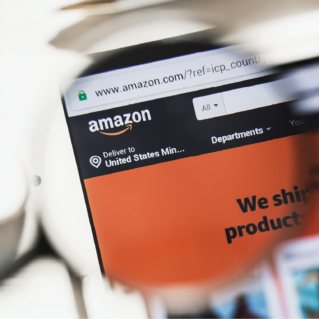As part of its evolution and adaptation to market trends, the direct selling business model continues to adopt features of online commerce. While incorporating the strengths of e-commerce is important, the channel still has its own unique strengths—strengths that need to be communicated as part of a strategic and well-implemented communications program.
Almost anyone can click and purchase a product online. However, consumers yearn for the personalized service and connection that is at the core of the segment’s business model. Direct selling offers “personalized selling” like no other business. This advantage is timely and important—personalization is at the forefront of pivotal communication trends in 2018.
In making the most of the personalized selling proposition at the heart of the channel, companies can take full advantage of the valuable customer and product usage information that lies with the distributors. Distributors are influencers and brand advocates or ambassadors. There is incredible value in better leveraging this resource for brand communication purposes.
The following three points are key emerging communications trends that direct selling companies can easily incorporate into their businesses to utilize distributor influence and to positively impact customer acquisition.
1. Disseminate Public-Centric Content That is Smart Content, Too
Direct selling companies have a distinct advantage in today’s online commerce world—customer acquisition has generally been the result of customers’ direct product use, which leads to product evangelism, which then results in the conversion of some customers to distributors.
When you consider the segment’s product adoption curve, the standard marketing strategy of most industries doesn’t completely apply to the direct selling channel; as it’s usually only customer-centric where the companies are trying to establish a relationship with the consumer. In direct selling, the customer-to-distributor conversion process is often due to the fact that the direct selling product user already has a strong relationship with the brand and its representatives.
To have the direct selling business model evolve to the next level and embrace the relatively new communications channels that technology now provides, direct selling companies need to also embrace a communications strategy beyond the individual customer and distributor and provide public-centric content—content that produces a positive relationship with the broader public.
This is basically the reverse of a traditional business model, which personalizes an impersonal brand. Direct selling brands are already personalized. The imperative is to take the already humanized and individualized brand and convey the organization, culture and credibility behind the brand and the distributor to the public.
Offer product testimonials, but be sure to add in the credibility and the science behind the product. For example (and with guidance from compliance, as appropriate), explain raw ingredient cultivation, the manufacturing process, specific ingredients that reinforce the company’s brand, mission and culture.
Be strategic in your product communications and target the product to a specific demographic, geographic area, season or age. Make that product more relevant by highlighting a key ingredient and discussing its effectiveness. Create several marketing versions, with the same message, and deliver the content via creative methods pegged to key audiences.
Look to the distributors that fit that target demographic and leverage their experiences and their distributorships. Allow this content to be used as a business tool for, and by, distributors (based on their business demographics) and as an endorsement for the company.
Much of direct selling companies’ content gems get lost amidst distributor sales and recruitment statistics. Frequently, the raw materials to deliver compelling content may not be documented or readily available for content-creation purposes. It’s very important to make this type of content accessible.
HubSpot, a marketing and sales software development company, defines smart content, as “content that is intelligently personalized (i.e., experiences that can be expanded to connect to the broader demographic) to your customer’s needs.” That is an incredibly valuable asset held by direct selling companies to be leveraged in today’s e-commerce environment.
The direct selling channel gets close to the people who use its products, who are attracted to the opportunity, and who seek out a specific cultural fit. Direct selling executives can use their company’s unique data to create compelling content for specific personas drawn to your brand proposition and use this content appropriately at the corporate level and within distributor ranks. It will take additional analysis, organization and distributor training, but it will be a valuable exercise. Smart content moves beyond content for awareness and targets potential customers, as well as potential distributors, and can have a measurable ROI.
2. Make Use of Messaging Apps and Micro-Influencers
Smart content derived from customer and distributor data also provides information that can be used for effective messaging campaigns—generated through technology as well as through communication by customers, distributors and others. From the technology side, messaging campaigns can include using sales and chat bots on Messenger that serve as more of a parallel track to email marketing.
These campaigns create an interactive and inclusive experience, such as a game around a major holiday or a secret password to a virtual product party. Such experiences serve the corporate brand and culture and relate back to the broader messaging of the company.
Micro-influencers are those people who are highly engaged on social media with a significant fan base. Many of these influencers started out as bloggers, and they now incorporate a full suite of social media channel outreach. Micro-influencers can be excellent sources for product reviews. The key is to target the correct type of influencer for your audience and product. Find these influencers via databases that provide these contacts.
Empower the micro-influencer to tell a story with your product—a weight-loss journey, achieving brighter skin, acquiring more energy and so on. Most influencers are open to discussing the message you want to send and the ways that you might want to send it. In addition, some direct selling company distributors are also micro-influencers, so there can be overlap. Many distributors who have actively built online businesses have also grown their online followers. Leverage these resources.
3. Create Integrated, Consistent, Cohesive Communications
In all walks of society and business, communication is more fragmented today than ever before. To create successful communications (and marketing) in support of a direct selling company, it is important to achieve consistency and integration. This coordinated approach should include creation, repurposing, amplification and syndication of content across a company’s digital channels.
Internally, this can translate into several teams collaborating and sharing ownership, and breaking down the walls between siloed departments. Externally, integration can be facilitated by identifying and prioritizing digital channels, learning which audiences favor which channels and understanding which messages audiences expect to hear on those channels.
For example, the language and visuals of a Twitter post differ from those used in Facebook which differs from those used in Instagram, and so forth. This process requires a coordinated effort at the corporate level to reach a broader audience that is more inclined to resonate with your message. This process also requires a training commitment to those distributors interested in growing their businesses.
The direct selling channel has a great opportunity to leverage these digital communication trends. The data already exists and does not require an initial investment in artificial intelligence. While technology allows a company to extend its reach to a broader, yet more targeted, audience, distributors also amplify that message digitally and can provide a staggering number of additional content channels.
Direct selling companies will maximize their ability to benefit from, and keep pace with, the digital landscape if they can identify the trends that offer better value propositions for their businesses and be prepared to take advantage of new technologies for greater ROI.
 Bobbie Wasserman is managing director of Wave2 Alliances Inc., a corporate reputation and crisis management consultancy. She also serves as an Advisory Board Member for the Direct Selling World Alliance.
Bobbie Wasserman is managing director of Wave2 Alliances Inc., a corporate reputation and crisis management consultancy. She also serves as an Advisory Board Member for the Direct Selling World Alliance.



